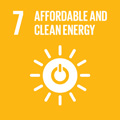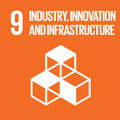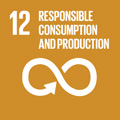- Docente: Villiam Bortolotti
- Credits: 9
- SSD: ING-IND/30
- Language: Italian
- Teaching Mode: In-person learning (entirely or partially)
- Campus: Bologna
- Corso: Second cycle degree programme (LM) in Environmental Engineering (cod. 8894)
-
from Feb 17, 2025 to Jun 11, 2025
Learning outcomes
The course is aimed at providing students with the necessary knowledge to use numerical modelling as a tool for the correct and sustainable management of underground fluids reservoirs (geothermal fluids, aquifers and hydrocarbons). In addition to the study and development of the necessary mathematical and informatic tools, the basic concepts relating to the storage of fluids in underground reservoir rocks (CO2 and hydrogen) will also be addressed. An integral part of the skills acquired by the student will be oriented to the management and processing of data relating to petrophysical, thermodynamic, thermophysical and fluid dynamic parameters and variables that characterize fluid flow of underground reservoir in multiphase regime. Practical application through the use of a simulator on a specific case study is a fundamental part of teaching to develop practical skills related to the theoretical concepts.
Course contents
Prerequisite
The student who accesses this course is required to be able to adequately use the basic mathematical notions of differential calculus.
All lessons will be held in Italian, therefore it is necessary to know the Italian language to successfully attend the course and to be able to use the teaching material provided by the teacher.
Programma
The program is divided into two parts. The first lays the theoretical foundation and develops the concepts of the course, while the second applies them through computer lab activities where a numerical simulation of a case study related to injection and production in the reservoir is carried out.
Parte 1
Cenni alle tecnologie CCS (Carbon Capture, Storage) e ai relativi sistemi del sottosuolo (falde acquifere, giacimenti di idrocarburi esauriti, ecc.). Stoccaggio sotterraneo di energia (gas naturale, gas naturale liquefatto, idrogeno e aria compressa). Energia geotermica (alta e media entalpia) e prospettive di stoccaggio del calore nel sottosuolo.
Introduzione ai concetti di sistema e modello: definizioni generali, relazioni, parametri e variabili. Classificazione dei sistemi e dei modelli. Introduzione generale allo studio del comportamento dinamico di giacimenti (geotermici, acquiferi e di idrocarburi) mediante simulazione numerica. La simulazione: simulazione forward e backward per la calibrazione del modello: history matching. Analisi di sensitività. Simulazione stato naturale. Applicazione alle georisorse: modello geologico (concettuale) e modello numerico. Principali proprietà petrofiche: porosità , bagnabilità, permeabilità assoluta e relativa. Principali proprietà dei fluidi di strato. Comportamento termodinamico dei fluidi: diagramma di stato e di Andrews, Legge di Henry e di Raoult. La legge di Darcy per flusso multifase. Principali proprietà termofisiche dei mezzi porosi. L'equazione di bilancio di massa. Equazione di trasporto del calore: bilancio energetico per sistemi aperti. Modello matematico di un giacimento: equazione per il flusso monofase in un mezzo poroso di un fluido debolmente comprimibile. Classificazione dei modelli matematici dei giacimenti mediante la geometria e il numero delle fasi mobili. Modello per il flusso di gas. Modello per flusso bi e trifase senza scambio di massa tra le fasi. Modello black-oil per giacimenti di olio medio-pesante. Modello di flusso multifase composizionale. La modellistica per specifici sistemi non-isotermi con flusso multifase e multicomponente in mezzi porosi e porosi-fratturati. Concetti di base relativi alla tecnica di discretizzazione alle differenze finite (FD) per l'integrazione numerica delle equazioni differenziali alle derivate parziali. Elementi di convergenza, consistenza e stabilità dello schema FD. Cenni alla tecnica IFDM. Errori di troncamento. Griglie strutturate e non strutturate. Griglie full voronoi 3D. Livello di implicità nella simulazione con modelli multifase: pressione implicita saturazione esplicita (IMPES), metodo sequenziale, metodo totalmente implicito. Soluzione di sistemi di equazioni lineari: metodi diretti (metodo di Gauss, metodo della fattorizzazione, metodo di Thomas), metodi iterativi (Jacobi, Gauss-Siedel, PSOR, LSOR). Cenni alle strategie operative per la simulazione dei reservoir.
Parte 2
Esercitazioni in laboratorio informatico mediante simulazioni numeriche del comportamento di reservoir. Struttura del file di input gestito a Card/keyword. Analisi del file di output anche finalizzata ad una semplice attività di ingegneria di serbatoio. Simulazione numerica di un caso studio relativo all'iniezioine e produzione di fluidi in un reservoir, mediante software freeware multifase e relativi tools di pre- e post-processing.
Readings/Bibliography
Teaching material provided by the teacher.
Teaching methods
Lectures will be of the traditional type with demonstrations carried out on the blackboard and with exercises concerning the topics discussed during the lectures.
Regarding the numerical simulation activities carried out in the computer lab, the student is required to produce a report that will be discussed in the examination.
Assessment methods
Students must sit an oral exam comprising of a series of questions that aim to ascertain students’ understanding of the theory of the technological and design principles presented during lectures, and a practical problem similar to the ones dealt with during the practical exercises related to the course lectures.
Moreover, the exam is aimed to assess the methodological and critical skills acquired by the student. The student will be invited to discuss the topics covered during the lessons and to move within the sources and bibliographical material in order to be able to identify in them the useful information that will enable to illustrate typical aspects of the course. The achievement of an organic vision of the issues addressed during the classes and their critical use, which demonstrate ownership of a mastery of expression and specific language, will be assessed with marks of excellence. Mechanical and/or mnemonic knowledge of matter, synthesis and analysis with a language that is not always appropriate will lead to discrete assessments. Training gaps and/or inappropriate language - although in a context of minimal knowledge of the material - will lead to votes that will not exceed the sufficiency. Training gaps, inappropriate language, lack of guidance within the reference materials used during the course will lead to failed assessments.
Teaching tools
Classroom presentations, freeware software.
Office hours
See the website of Villiam Bortolotti
SDGs




This teaching activity contributes to the achievement of the Sustainable Development Goals of the UN 2030 Agenda.
